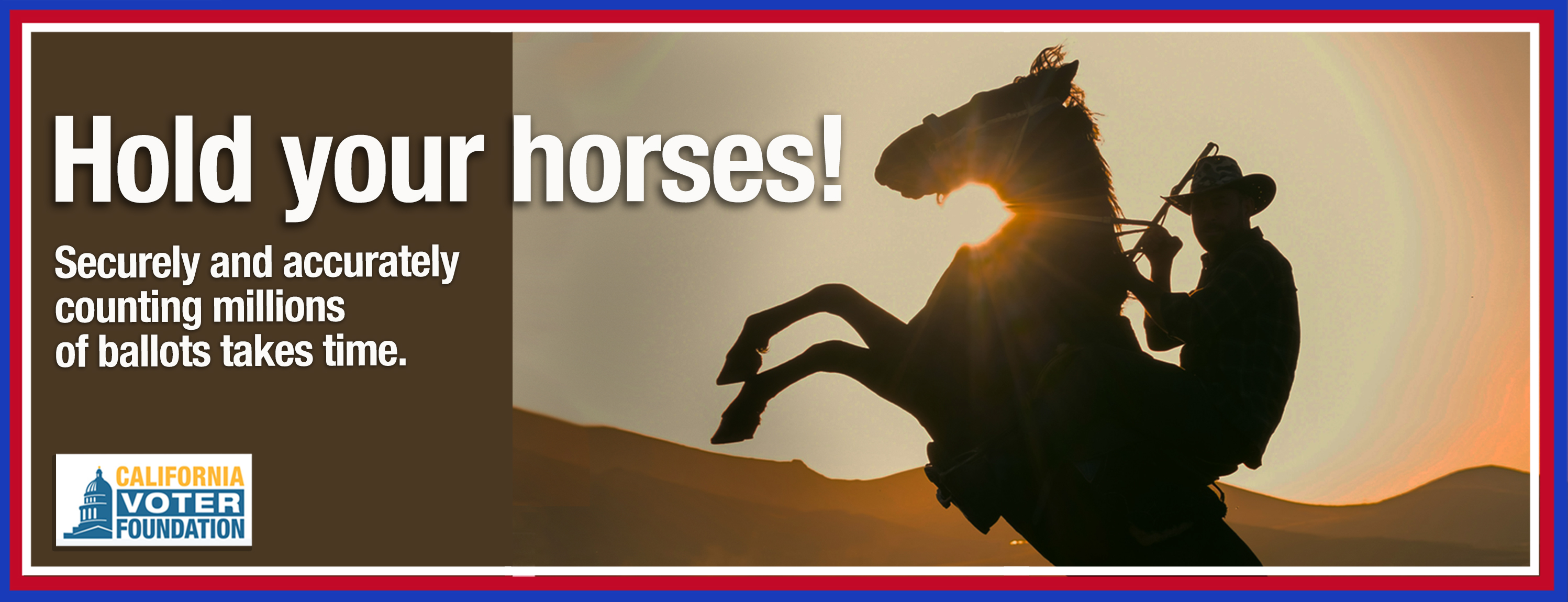There are still two U.S. House seats in California that remain "too close to call". In Southern California's CD 45, Republican incumbent Michelle Steele has seen her lead over Democratic challenger Derek Tran shrink from a high of 5.1 percent the morning after Election Day to 0.02 percent as of Friday. This amounts to just 58 ballots separating the two candidates, with an estimated 151,000 ballots remaining to process in the counties that are home to this district.
Another House race that is still too close to call is the Central Valley's CD 13, where Republican incumbent John Duarte has seen his lead over Democratic challenger Adam Gray shrink from a high of 2.9 percent the morning after Election Day to 1.1 percent as of Friday. This amounts to just 1,192 ballots separating the two candidates, and an estimated 73,000 ballots remaining to process in the counties that are home to this district.
Another set of numbers campaigns and election observers are keeping an eye on is the number of "Ballots Left to Cure", a new feature on the Secretary of State's Unprocessed Ballots Status report that shows how many vote-by-mail and provisional ballots have been challenged by election staff, primarily due to voters' missing or mismatched signatures. As of last night, 15.3 million California ballots had been counted, approximately 880,000 remained to be processed and 128,500 eligible for voters to cure.
Local election offices are required by state law to contact voters with signature issues and provide a chance to correct or "cure" their ballots by providing a valid signature.
But election offices are not the only ones reaching out to these voters. Because political campaigns have access to voter data from election offices, they also know whose ballots have been challenged, and are also contacting voters who they believe support their campaign and urging them to follow through with their county election offices' request to submit a valid signature so their ballots can be counted. Under a new law, AB 3184, voters have 26 days after Election Day - until December 1 - to cure their ballots. As the Los Angeles Times reported last week, this new dynamic of post-election outreach is being increasingly utilized by campaigns facing narrow margins.
While the Associated Press and other news outlets "called" enough House races to declare on November 13th that the Republican Party will hold a majority of its seats next year, that margin currently remains at a bare majority of 218 seats. Since that call was made, the AP has called additional House contests for Democrats, including California's CD 47 for Dave Min on November 13, CD 9 for Josh Harder on November 15, and CD 21 for Jim Costa on November 15. Other close races recently called by AP include California's CD 41, for Republican incumbent Ken Calvert on November 13, helping the GOP reach the 218 total for the majority.
Meanwhile, the situation remains tense for election officials and their staff. A number of California counties' election offices received bomb threats via email the Friday after Election Day. Bomb threats were also received in local election offices in Maryland. These threats are in addition to bomb threats made in numerous states on Election Day.
Nationwide, California's two remaining uncalled House seats are among only five House contests yet to be called. It is safe to say campaigns on both sides of CD 13 and CD 45 will continue to closely monitor the vote count.
CVF will continue to do so as well, through our Close Count Transparency Project and contest tracker updating vote counts daily and providing a reliable record of results as they change, until elections are certified in early December. Several legislative contests we are tracking also remain extremely close, such as Assembly District 58 where just 509 votes separate the two candidates. Two statewide propositions - 32 and 34 - also are still undecided, along with many local contests around the state as counties work their way through processing vote-by-mail ballots.



